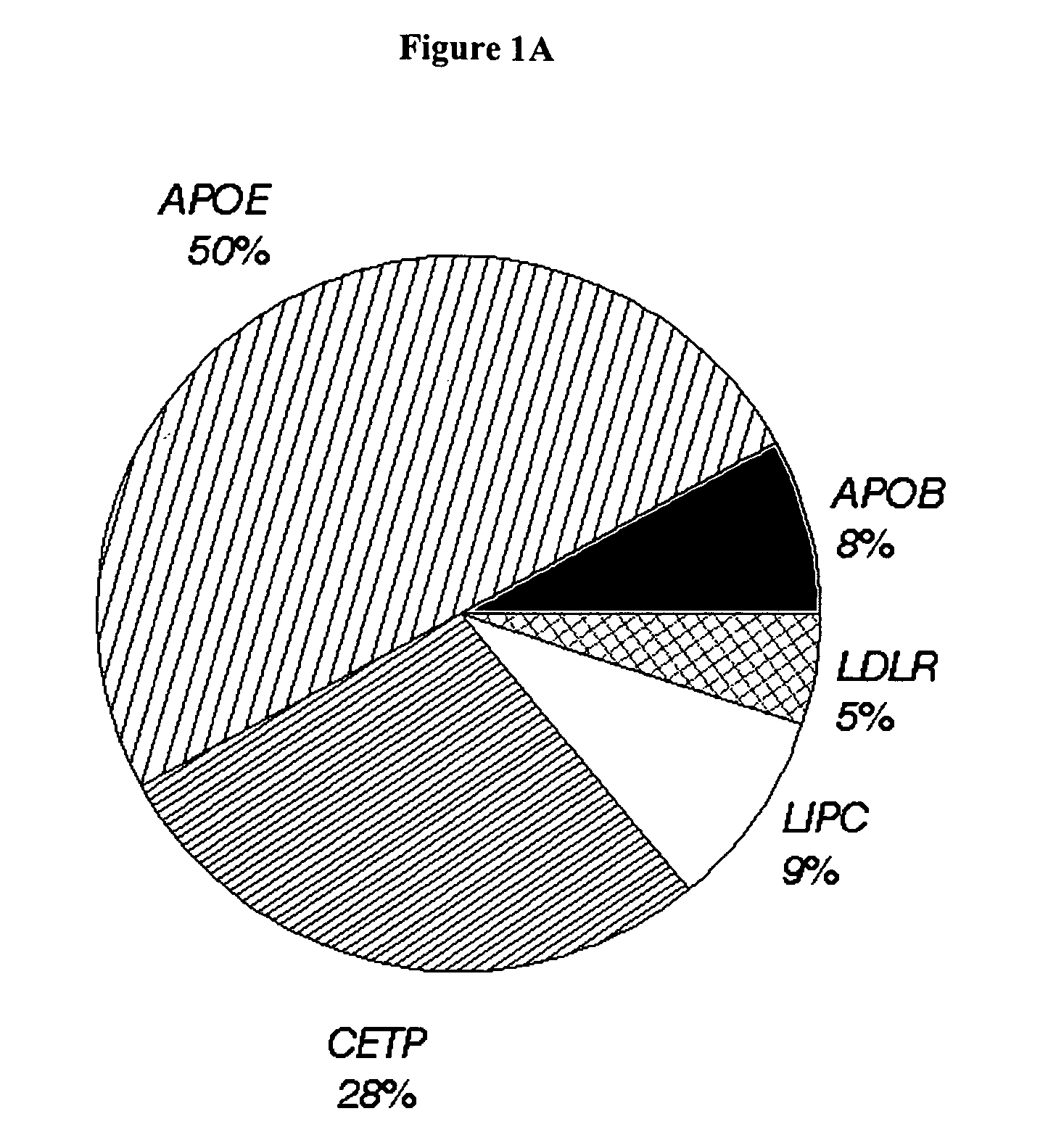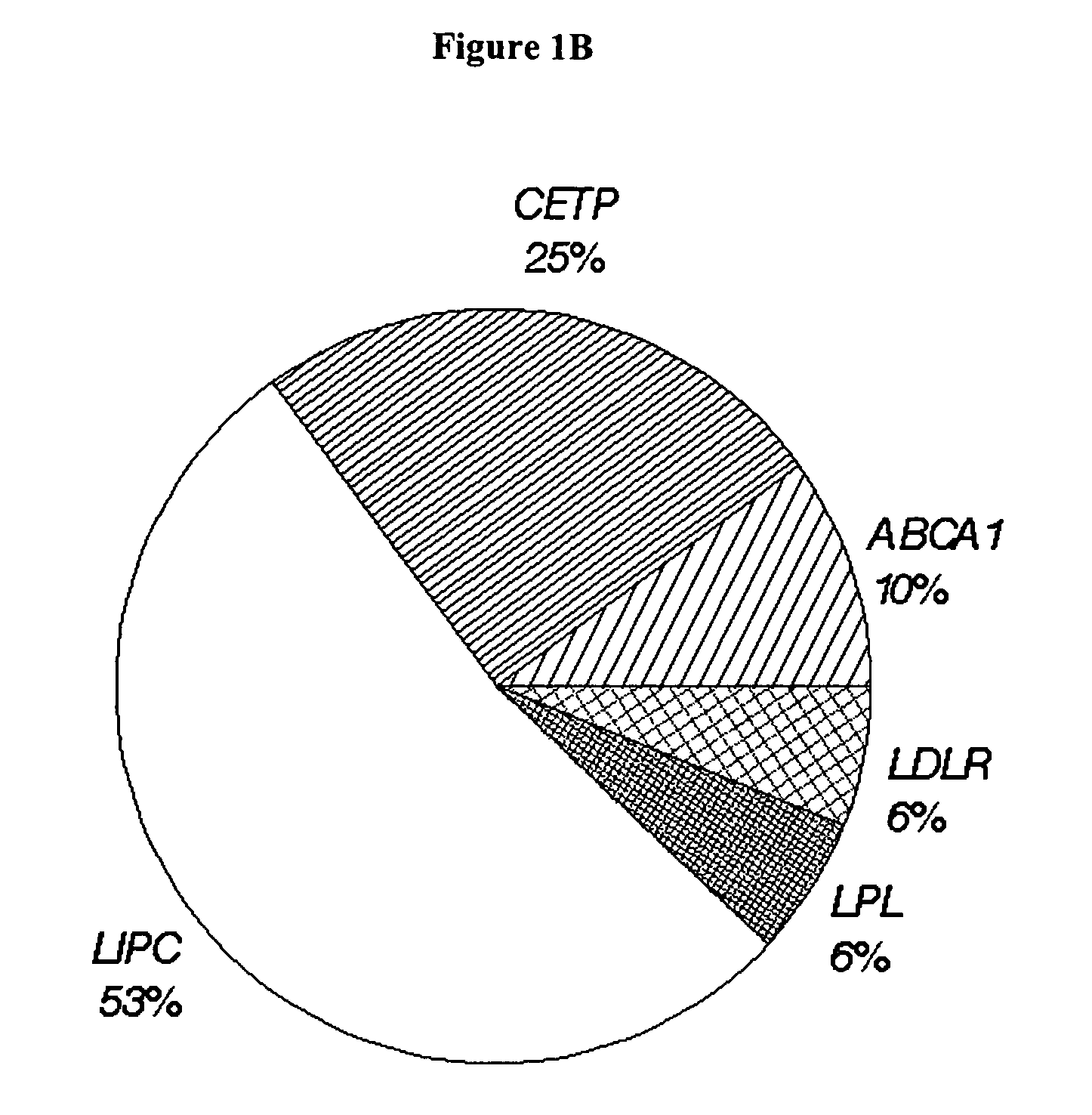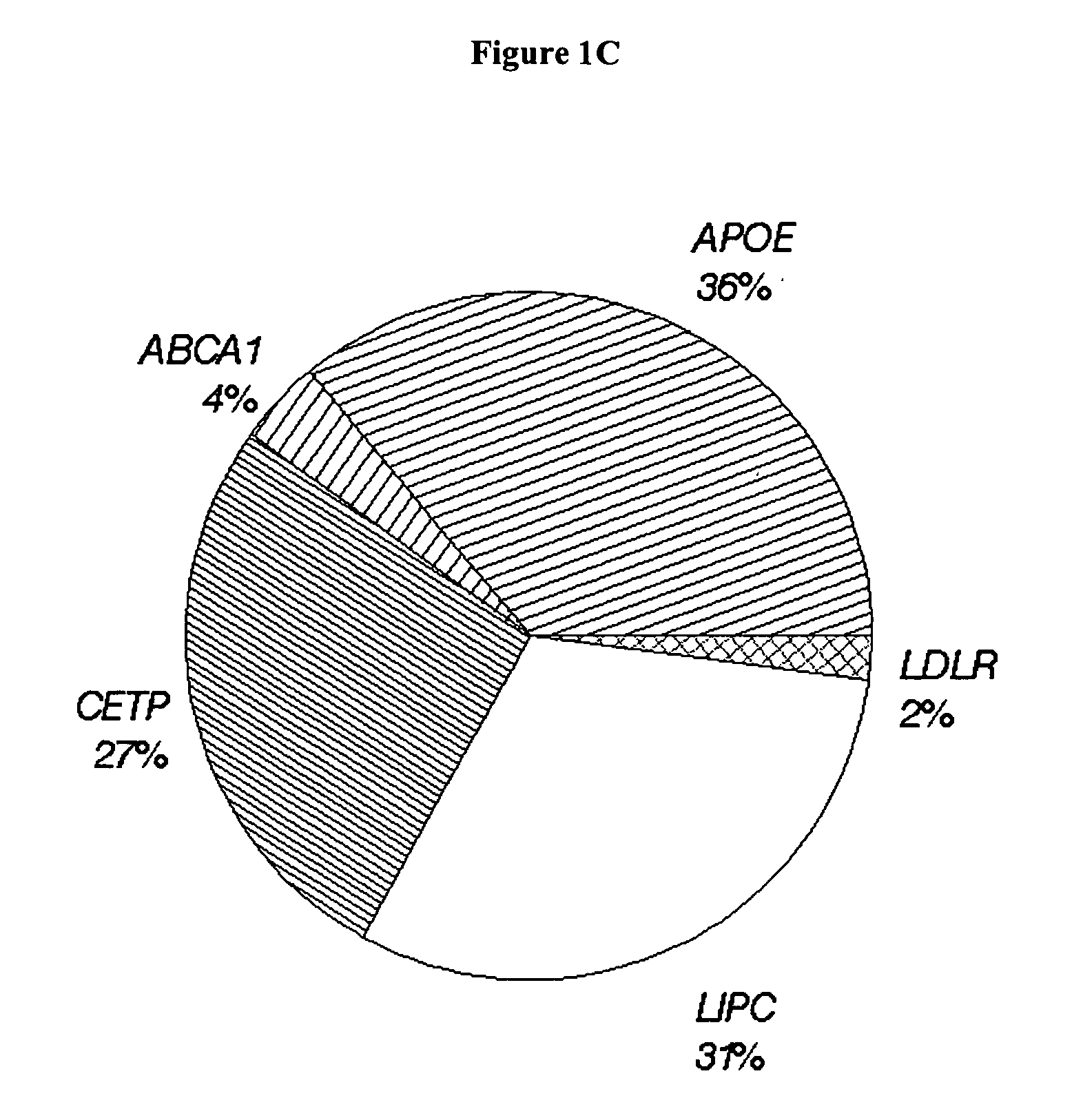Use of haplotypes and SNPs in lipid-relevant genes for the analysis and diagnosis of cardiovascular disease
a technology of lipid-relevant genes and haplotypes, applied in the field of use of haplotypes and snps in lipid-relevant genes for the analysis and diagnosis of cardiovascular disease, can solve the problems of complicated picture, difficult analysis of complex genetic traits, and incomplete picture of all genetic factors, so as to diagnose a genetic predisposition or susceptibility
- Summary
- Abstract
- Description
- Claims
- Application Information
AI Technical Summary
Benefits of technology
Problems solved by technology
Method used
Image
Examples
examples
Methods
Study Population
[0051] The present inventors selected 218 extended families from the present genetic field working program according to methods outlined elsewhere (Schuster, H., Lamprecht, A., Junghans, C., Dietz, B., Baron, H., Nothnagel, M., Muller-Myhsok, B., Luft, F. C. (1998) Approaches to the genetics of cardiovascular disease through genetic fieldwork. Kidney. Int., 53, 1449-1454). All subjects completed a medical questionnaire and were examined by their family physician or by the present inventors. The present university's committee on human subjects approved the protocol and written informed consent was obtained from all participants. Families with familial hypercholesterolemia, familial-combined hyperlipidemia, or familial hypertriglyceridemia were excluded, as were families with patients who had known secondary causes of hyperlipidemia. The present inventors focused instead on families without known primary or secondary lipid disturbances. The persons in this a...
PUM
| Property | Measurement | Unit |
|---|---|---|
| density | aaaaa | aaaaa |
| structure | aaaaa | aaaaa |
| physical distance | aaaaa | aaaaa |
Abstract
Description
Claims
Application Information
 Login to View More
Login to View More - R&D
- Intellectual Property
- Life Sciences
- Materials
- Tech Scout
- Unparalleled Data Quality
- Higher Quality Content
- 60% Fewer Hallucinations
Browse by: Latest US Patents, China's latest patents, Technical Efficacy Thesaurus, Application Domain, Technology Topic, Popular Technical Reports.
© 2025 PatSnap. All rights reserved.Legal|Privacy policy|Modern Slavery Act Transparency Statement|Sitemap|About US| Contact US: help@patsnap.com



